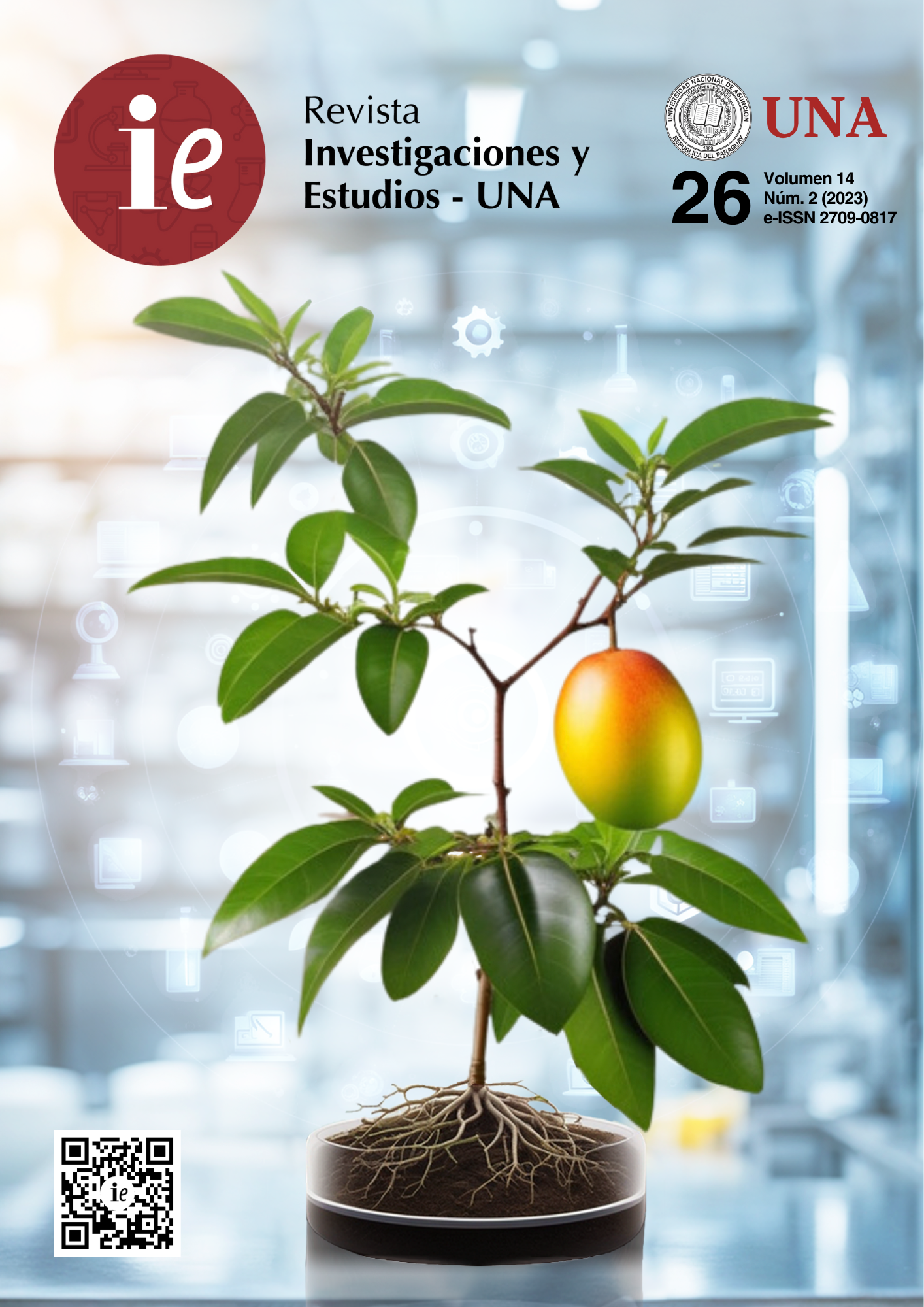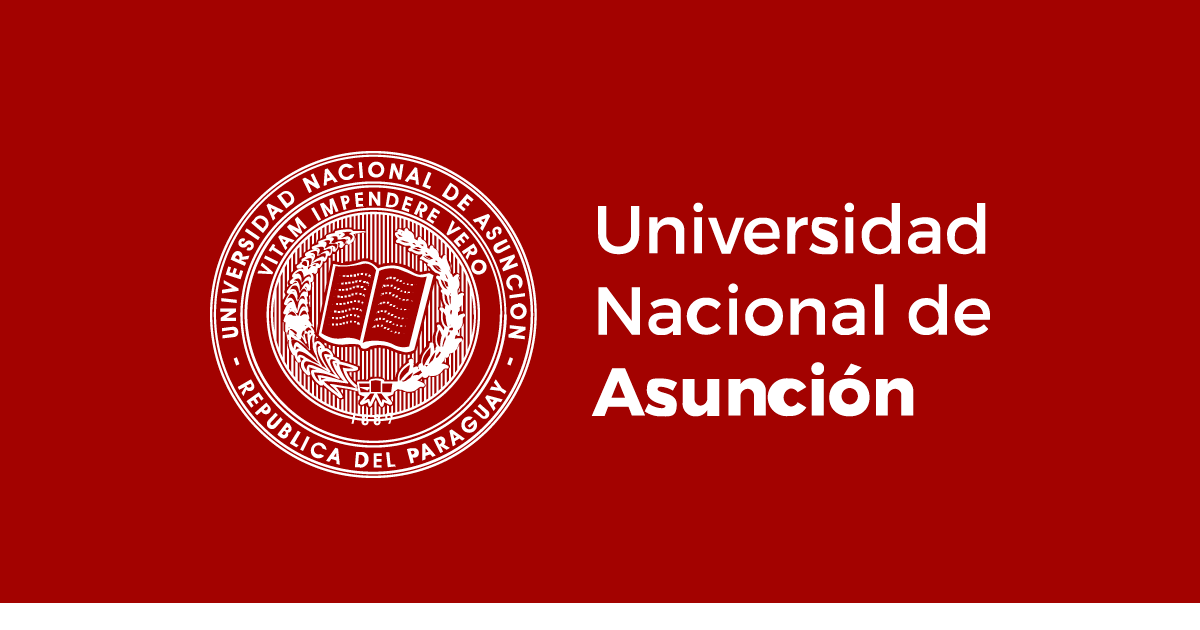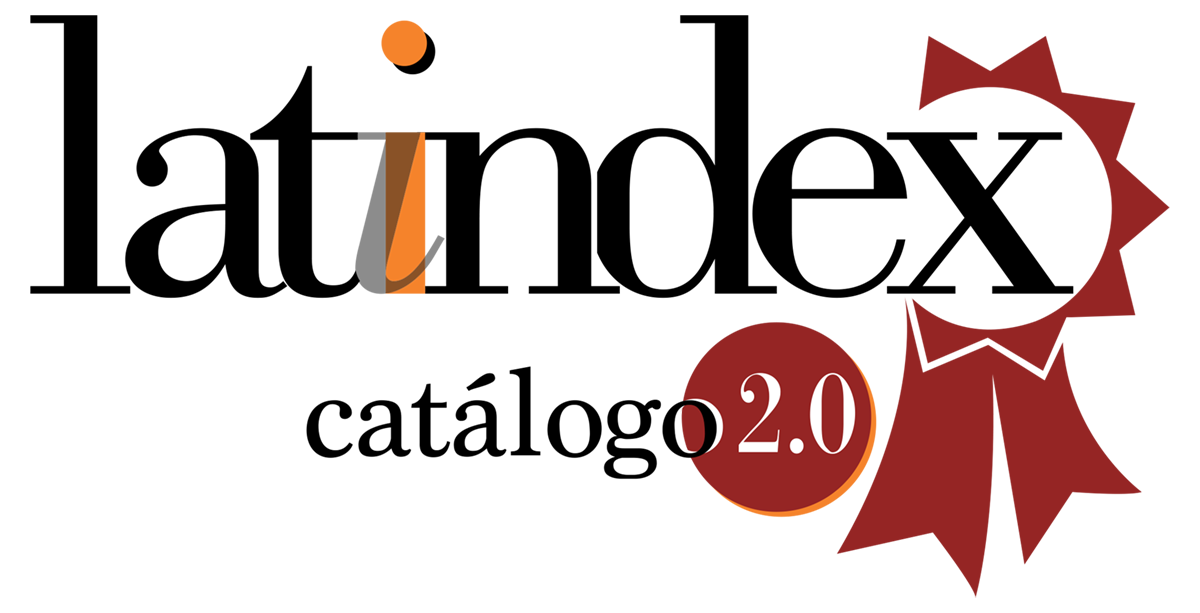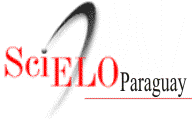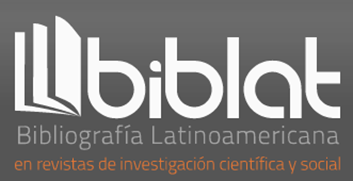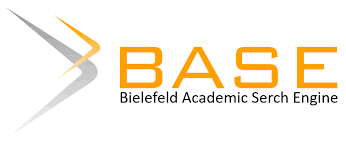Extractos botánicos en el control de Colletotrichum gloeosporioides (Penz.) Penz. & Sacc. causante de antracnosis en mango (Mangifera indica L.).
DOI:
https://doi.org/10.57201/ieuna2323326Palabras clave:
inhibición , hongos fitopatógenicos , fungicidaResumen
Colletotrichum gloeosporioides es uno de los patógenos más destructivos del mango en campo y postcosecha en el mundo. Se busca mejorar el manejo integrado mediante la selección de extractos vegetales fungitóxicos que ayuden a reducir la aplicación de fungicidas químicos. El objetivo de esta investigación fue comparar la efectividad biológica fungicida o fungistático in vitro de extractos botánicos contra C. gloeosporioides. Se utilizaron como tratamientos T1= Progranic NeemAcar® (extractos de neem Azadirachta indica 55 % + canela-Cinnamomum zeylanicum 15 %), T2= Regalia Maxx® (extracto de falopia Reynutria sachalinensis 20 %), T3= Progranic Mega® (extracto de gobernadora-Larrea tridentate 95 %), T4= Testigo. Se utilizó una cepa de C. gloeosporioides patogénica previamente identificada en el laboratorio; se evaluó con la técnica de cultivo en PDA envenenado mediante el diseño completamente al azar con cinco repeticiones, la unidad experimental fue una placa Petri con 20 mL de PDA. Se midieron diariamente por 10 días el crecimiento miceliar y el porcentaje de inhibición de C. gloeosporioides. Se realizaron el análisis de varianza y la comparación de medias por el método de Tukey. Se encontró que el extracto botánico Progranic NeemAcar® presentó 100 % de efectividad biológica. Los productos Regalia Maxx®, Progranic Mega® inhibieron 80 y 23 % el crecimiento del patógeno, respectivamente. Los pesticidas botánicos Progranic NeemAcar® y Regalia Maxx® tienen potencial para utilizarse en el manejo integrado en forma individual o alternada con los fungicidas contra el patógeno de la antracnosis en mango.
Descargas
Referencias
Akem, C. N. (2006). Mango anthracnose disease: Present status and future research priorities. Plant Pathology, 5(3), 266-273. https://doi.org/10.3923/ppj.2006.266.273.
Betz, E. C. (2020). Identification and management of wasabi pathogens in British Columbia (Degree of Master of Science Thesis). Department of Biological Sciences Faculty of Science. Simon Fraser University. Spring. https://summit.sfu.ca/item/20360.
Ciofini, A., Negrini, F., Baroncelli, R. & Baraldi, E. (2022). Management of post-harvest anthracnose: current approaches and future perspectives. Plants, 11, 1856. https://dx.doi.org/10.3390/plants11141856.
Daayf, F., Schmitt, A. & Belanger, R. R. (1995). The effects of plant extracts of Reynutria sachalinensis on powdery mildew development and leaf physiology of long English cucumber. Plant Disease, 79(6), 557-580. https://dx.doi.org/10.1094/PD-79-0577.
Daayf, F., Ongena, M., Boulanger, R. Hadrami, I. E. & Bélanger, R. R. (2000). Induction of phenolic compounds in two cultivars of cucumber by treatment of healthy and powdery mildew-infected plants with extracts of Reynytria sachalinensis. Journal of chemical Ecology, 1579-1593. https://dx.doi.org/10.1023/A:1005578510954.
Espinosa, A. J., Arias, S. J., Rico, P. H., Miranda, S. M. & Chávez, C. X. (2004). Dinámica del daño y control de la antracnosis Colletotrichum gloeosporioides (Penz.) en mango de Michoacán. INIFAP. Folleto técnico. Núm. 5. pp. 1-28.
Fofana, B., McNally, D. J., Labbé, C., Boulanger, R., Benhamou, N., Séguin, A. & Bélanger, R. R. (2002). Milsana-induced resistance in powdery mildew-infected cucumber plants correlates with the induction of chalcone synthase and chalcone isomerase. Physiological and Molecular Plant Pathology, 61(2), 121–132. https://dx.doi.org/10.1006/pmpp.2002.0420.
Iqbal, S., Khan, M. A., Atiq, M., Rajput, N. A., Usman, M., Nawaz, A., Kachelo, G. A., Akram, A. & Ahmad, H. (2022). Mango anthracnose: global status and the way forward for disease management. Journal of Innovative Sciences, 8(2), 222-235. | https://dx.doi.org/10.17582/journal.jis/2022/8.2.222.235.
Kumar, P. & Mane, S. S. (2017). Studies on the compatibility of biocontrol agents with certain fungicides. International Journal of Current Microbiology and Applied Sciences, 6(3), 1639-1644.
Kumari, P. R. & Singh, R. (2017). Anthracnose of mango incited by Colletotrichum gloeosporioides: A comprehensive review, International Journal of Pure & Applied Bioscience (IJPAB), 5(1), 48-56. doi: http://dx.doi.org/10.18782/2320-7051.2478.
Patil, N. N., Waghmo, de M. S., Gaikwad, P. S., Gajbhiye, M. H., Gunjal, A. B., Nawani, N. & Kapadnis, B. P. (2014). Potential of Microbispora sp. V2 as biocontrol agent against Sclerotium rolfsii, the causative agent of southern blight of Zea mays L. (Baby corn) in vitro studies. Indian Journal of Experimental Biology, 52, 1147- 1151. https://imsear.searo.who.int/handle/123456789/153805.
Prashanth, A., Sataraddi, A. R., Naik, M. K., Patil, M. B. & Patil, R. S. (2008). Evaluation of fungicides, bioagents and botanicals against pomegranate anthracnose. Indian Journal of Plant Protection, 36, 283- 287.
Torres-Calzada, C., Tapia-Tussell, R., Higuera-Ciapara, I., Martin-Mex, R., Nexticapan-Garcez, A. & Perez-Brito, D. (2015). Sensitivity of Colleto-trichum truncatum to four fungicides and characterization of thiabendazole-resistant isolates. Plant Disease, 99,1590-1595 https://doi.org/10.1094/PDIS-11-14-1183-RE.
SAS. (2015). SAS/STAT® 15.1 User´s Guide. SAS Institute Inc. https://documentation.sas.com/doc/en/pgmsascdc/9.4_3.4/statug/titlepage.htm.
Secretaria de Agricultura, Ganadería, Desarrollo Rural, Pesca y Alimentación (SADER). (2015). Modificación a la Norma Oficial Mexicana NOM-032-FITO-1995. https://www.gob.mx/cms/uploads/attachment/file /563311/Modificaci_n_NOM-032-FITO-1995_110815.pdf.
Sharma, M. & Kulshrestha, S. (2015). Colletotrichum gloeosporioides: An anthracnose causing pathogen of fruits and vegetables. Biosciences Biotechnology Research Asia, 12, 1233-1246. https://doi.org/10.13005/bbra/1776.
Silva, P. E. M. (2015). Control cultural inductores de resistencia y compuestos antiesporulantes en el manejo de la moniliasis (Moniliophthora roreri Cip y Par) Evans et al. en el cultivo de cacao orgánico – Morropón. (Tesis de pregrado). Universidad Nacional de Piura. Facultad de Agronomía. Piura, Perú. pp. 26 y 38. https://repositorio.unp.edu.pe/bitstream/handle/UNP/398/AGR-SIL-PER-15.pdf?sequence=1&isAllowed=y
Shovan, L. R., Bhuiyan, M. K. A., Begum, J. A. & Pervez Z. (2008). In vitro control of Colletotrichum dematium causing anthracnose of soybean by fungicide, plant extracts and Trichoderma harzianum. Int. J. Sustain. Crop Production, 3(3), 10-17.
Tucuch, H. J. I., Cicero, J. L., Rodríguez, M. J. C. & Baeza, R. J. J. (2015) Evaluación de dos productos orgánicos para el control de Bemisia tabaci (Gennadius). En J. H. Martínes, R. L. López y J. C. Cámara (Eds.). Ciencia y Tecnología Forestal y Agropecuaria en Tabasco (pp. 166-173). Universidad Juárez Autónoma de Tabasco. https://www.researchgate.net/profile/Jorge-Herrera-19/publication/339570307_Ciencia_y_Tecnologia_Forestal_y_Agropecuaria_en_Tabasco/links/5e59833392851cefa1cd7645/Ciencia-y-Tecnologia-Forestal-y-Agropecuaria-en-Tabasco.pdf#page=166.
Varela, F. S. E., Camacho, C. R., Briones, E. F. & López, S. J. A. (2013). Aceites agrícolas para el control de Diaphorina citri (Hemiptera: Liviidae) en limón italiano de Tamaulipas. En 25° Encuentro Nacional de Investigación Científica y Tecnológica del Golfo de México. Tampico, Tamaulipas, México. University of Florida. https://swfrec.ifas.ufl.edu/hlb/database/pdf/24_Varela_15.pdf.
Villanueva-Jiménez, J. A., Cabrera-Míreles, H., José-Pablo, R., Aguilar-Román, L., Murillo-Cuevas, F. D. & Díaz- Zorrilla, U. (2010). Evaluación preliminar de plaguicidas selectivos a enemigos naturales de Diaphorina citri Kuwayama (Hemiptera: Psyllidae), en toronja de la zona central costera de Veracruz. En Primer simposio Nacional sobre investigación para el manejo del psílido asiático de los cítricos y el huanglongbing en México. Monterrey. Nuevo León, México. University of Florida.
Publicado
Número
Sección
Licencia
Derechos de autor 2023 Sergio Ayvar-Serna, José Francisco Díaz-Nájera, Edna F. Valdez-Hernández , Antonio Mena-Bahena

Esta obra está bajo una licencia internacional Creative Commons Atribución 4.0.

